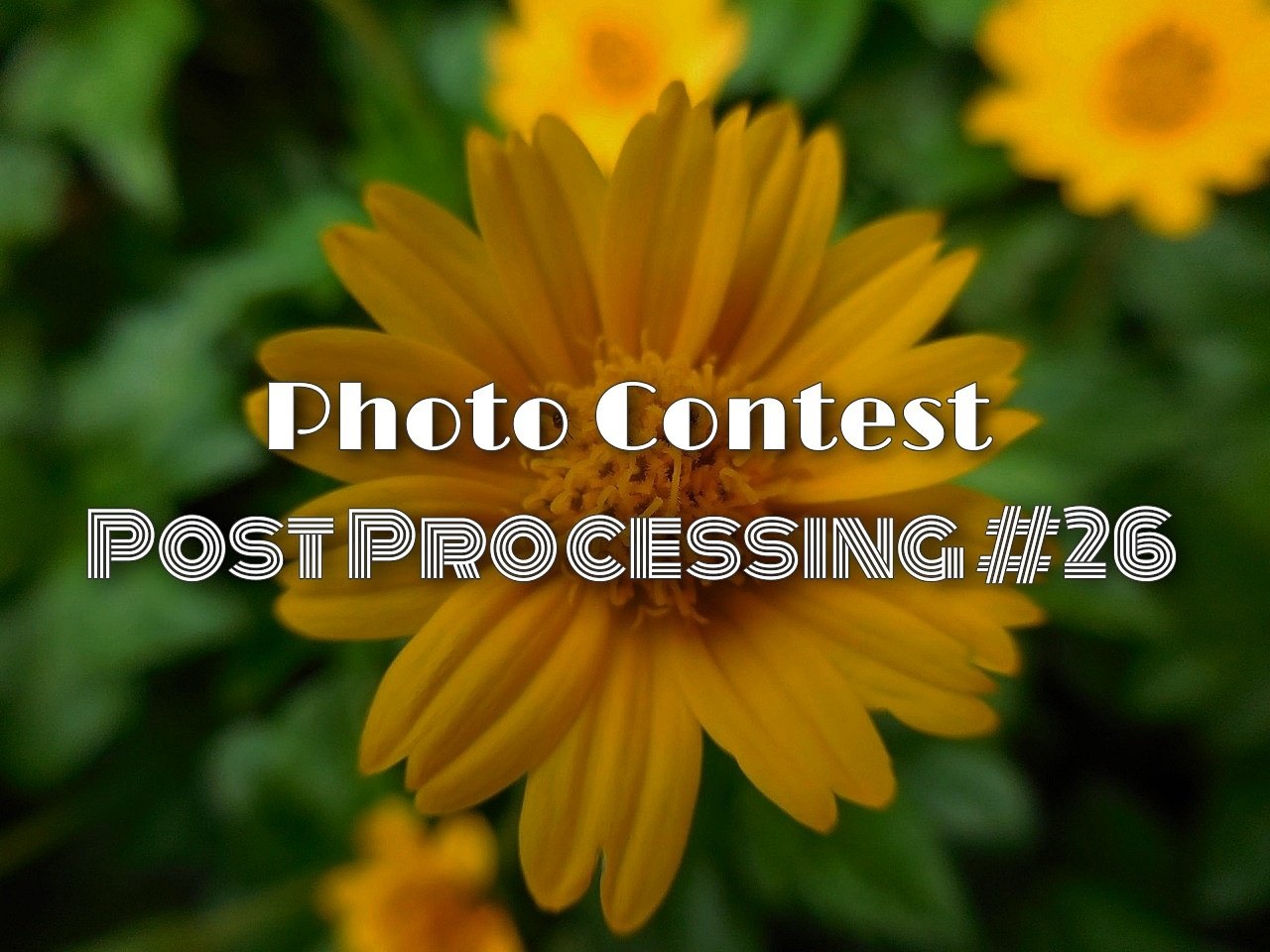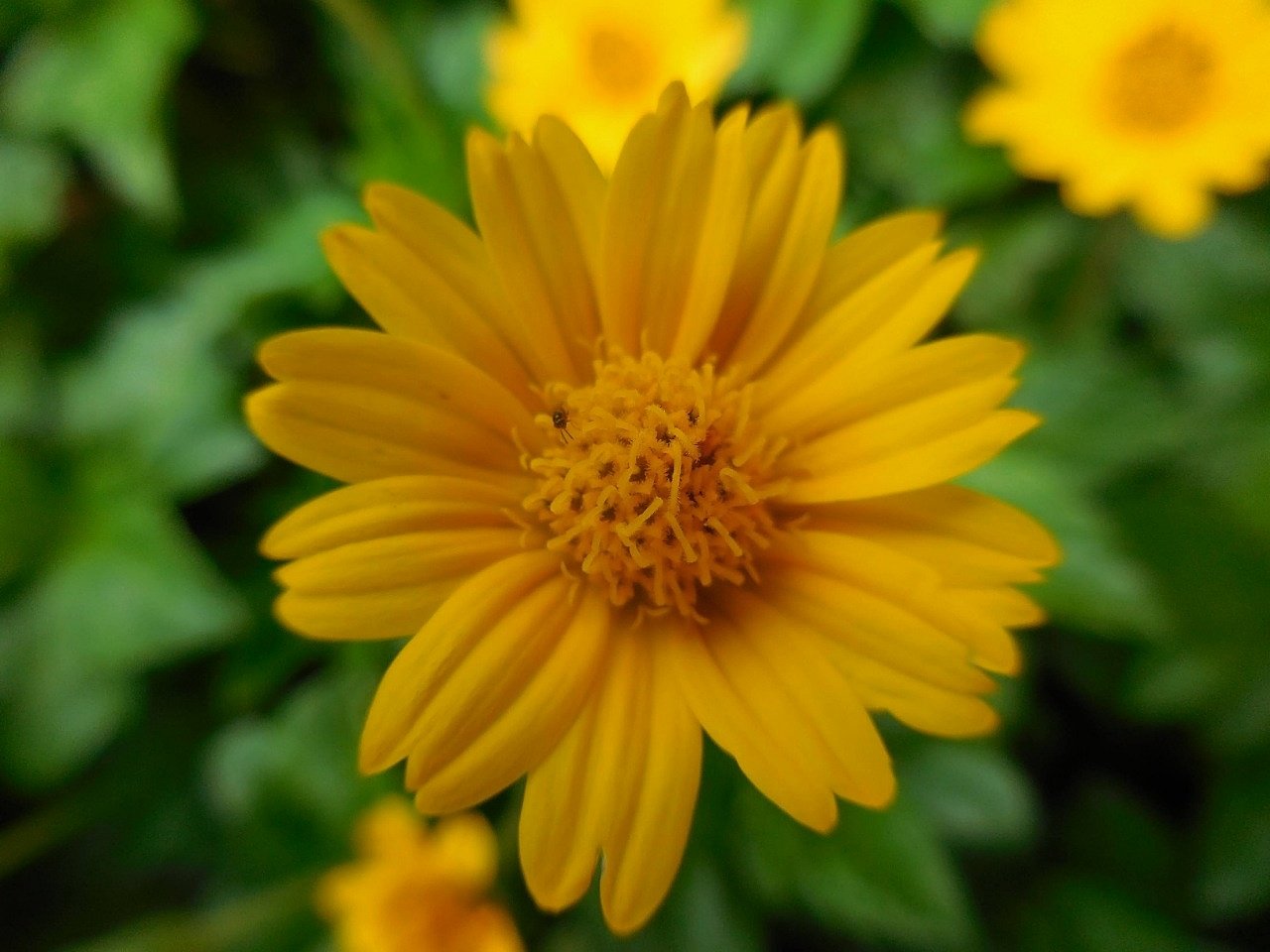"There is a sun, a light that for want of another word I can only call yellow, pale sulphur yellow, pale golden citron. How lovely yellow is!"
Vincent Van Gogh

Photo Contest: Post Processing #26 [ENG/ESP]
In photography, the exposure of an image is the sum of three key elements, which is usually known as the exposure triangle.
This trio of elements allow us to adjust the amount of light that reaches the camera or device, and they are made up of:
- The opening of the diaphragm
- Shutter speed
- ISO sensitivity
In the specific case of the opening of the diaphragm, its operation is very similar to the behavior of the iris of our eyes, which, depending on the lighting of the environment in which we find ourselves, will expand or shrink, thus controlling the size of our pupils in order to to regulate the light.
For this new initiative by @bambuka from the World of Xpilar Community, all participants are asked to take or select their own photograph and "separate the object from the background", that is, to play with the depth of the image in such a way that the background is blurred.
On this occasion, I chose a photo I took of a "creeping daisy", a small flower with an intense yellow color and a diameter ranging from 2 to 3 centimeters, which abounds in the planters located in the entrance lobby of the building where my mother lives.
I used a Nikon CoolPix 6800 digital camera, which I brought as close as possible to the tiny flower, achieving the following result, which although it was not my initial intention, I found quite interesting.
En la fotografía la exposición de una imagen es la suma de tres elementos claves, lo que se usualmente se conoce como el triángulo de la exposición.
Este trío de elementos nos permiten ajustar la cantidad de luz que le llega a la cámara o dispositivo, y están conformados por:
- La apertura del diafragma
- La velocidad de obturación
- La sensibilidad ISO
En el caso específico de la apertura del diafragma, su funcionamiento se asemeja mucho al comportamiento del iris de nuestros ojos, que dependiendo de la iluminación del ambiente en el que nos encontremos, se expanderá o encogerá controlando así el tamaño de nuestras pupilas con la finalidad de regular la luz.
Para esta nueva iniciativa del compañero @bambuka de la Comunidad World of Xpilar, se nos solicita a todos los participantes, tomar o seleccionar una fotografía propia, y "separar el objeto del fondo", es decir, jugar con la profundidad de la imagen de forma tal que el fondo se desdibuje.
En esta ocasión, escogí una foto que tomé de una "margarita rastrera", una florecilla de intenso color amarillo y de un diámetro que oscila entre 2 a 3 centímetros, y que abunda en las jardineras ubicadas en el lobby de entrada del edificio donde reside mi madre.
Utilicé una cámara digital Nikon CoolPix 6800, la cual acerqué lo más posible a la diminuta flor, logrando el siguiente resultado, que si bien no era mi intención inicial, me pareció bastante interesante.

The above image is the original and has not been subjected to any editing process, i.e., with the exception of resizing the photo, it retains all its values or parameters intact: lighting, brightness, contrast, saturation, shadows, structure, etc.
Technical data: f/3.3 - 1/500 - 4.50 mm - ISO 125
La imagen anterior es la original y no fue sometida a ningún proceso de edición, es decir, con excepción del redimensionamiento de la foto, conserva todo sus valores o parámetros intactos: iluminación, brillo, contraste, saturación, sombras, estructura, etc.
Datos técnicos: f/3.3 - 1/500 - 4.50 mm - ISO 125

| Camera: | Nikon CoolPix 6800 |
| Editor: | Picsart / Snapseed |
| Location: | Barquisimeto, Lara, Venezuela |
| Date: | 11-04-2021 |

